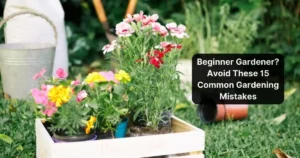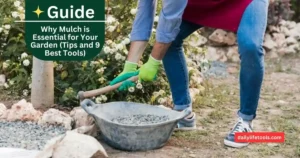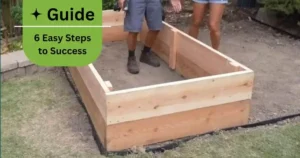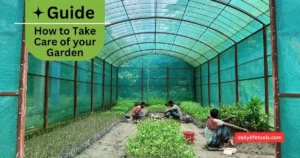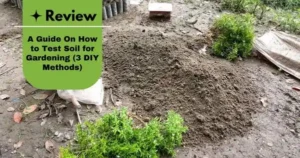These 12 steps help you start a new home garden and will help you achieve success.
Gardening has become one of the most popular hobbies in America. Over 71.5 million households, or 185 million people, now adore gardening at home.
In 2024, Kenton Seth and Alan Titchmarsh are the most successful gardeners in the USA today.
I followed them when I first started gardening.
After starting, I made many mistakes, which everyone usually does initially.
So that you don’t make the same mistakes I did, I’ve made an excellent beginner’s guide.
If you follow it, you’ll have a 90% chance of success.
And writing the article depends on my own experience. Every step of this article is very well discussed.
You will read the entire article and then understand how to start a garden for beginners the first time.
Hi everyone! Victoria Barnes here, your friendly neighborhood home garden hobbyist.
I’ve been growing veggies, herbs, and flowers for about 7 or 8 years. This article will discuss starting a garden for beginners: 12 easy steps.
Do you want to be a successful gardener? Then, you need to know essential realities if you’re a beginner.
Realities: 6 to 8 hours of sunlight daily, Good Soil, Location, and the Best month for planting. What vegetables, herbs, or flowers are good for starting a garden for the first time? Hybrid fruit, garden features, and bird food plants should also be known about, and many more.
Remember that children, marriages, and flower gardens reflect the kind of care they get.
H. Jackson Brown, Jr.
Before starting a new home garden, you must know about these steps.
1. Choose the best month
2. Plan your garden
3. Where to Put Your Garden
4. Rectify your soil
5. Sunlight
6. Essential tools you need
7. Prepare garden bed or grow bags
8. Select some seeds
9. Plant your seeds
10. Water your garden at the right time
11. Mulch your garden
12. Take care of your garden regularly
Video Link: How to Start a Garden for Beginners
PDF Link: How to Start a Garden for Beginners
Table of Contents
How to Start a Garden for Beginners 12-Step Guide
This beginner’s guide breaks down how to start a Garden for Beginners into 12 steps.
It covers choosing a location, preparing the soil, selecting seeds, planting, watering, and maintaining your garden for a successful harvest.
Step 1: Choose the Best Month
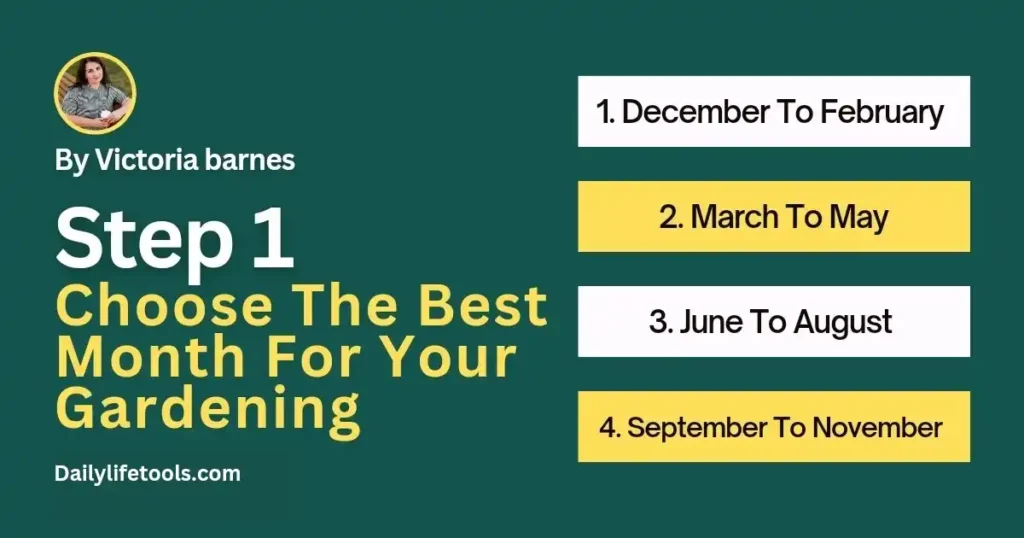
Whenever you start a new garden, you need to know which season is suitable for gardening.
In the USA, we have four seasons in a year.
The winter season starts from December to February
| Winter Vegetables | Winter Herbs | Winter Flowers |
|---|---|---|
| Allium bulbs (onions, shallots, garlic) | Thyme | Camellia |
| Avocados | Parsley | Cyclamen |
| Beets | Rosemary | Winter jasmine |
| Bok choy | Sage | Hellebore |
| Broccoli | Chives | Pansies |
| Broccoli rabe | Mint | Snowdrops |
| Brussels sprouts | Cilantro | Crocus |
The spring season starts from March to May
| Spring Vegetables | Spring Herbs | Spring Flowers |
|---|---|---|
| Artichokes | Sage | Daffodil |
| Beets | Cilantro | Hyacinth |
| Broccoli | Oregano | Crocus |
| Carrots | Dill | Tulips |
| Collard greens | Lavender | Lilac |
| Kale | Parsley | Primrose |
| Leeks | Lemon balm | ! |
The summer season starts from June to August.
| Summer Vegetables | Summer Herbs | Summer Flowers |
|---|---|---|
| Cucumber | Tarragon | Marigold |
| Corn | Lemongrass | Dahlia |
| Okra | Borage | Sunflower |
| Field Peas | Peppermint | Zinnia |
| Eggplant | Bay laurel | Bougainvillea |
| Carrots | Marjoram | Hibiscus |
| Tomatillos | Catnip | ! |
The fall / Autumn season starts from September to November
| Fall/Autumn Vegetables | Fall/Autumn Herbs | Fall/Autumn Flowers |
|---|---|---|
| Broccoli | Parsley (flat Italian or curled) | Snapdragon |
| Brussel Sprouts | sage | Coneflower |
| Cabbage | Rosemary | Hydrangea |
| Cauliflower | thyme | Marigold |
| Carrots | chives | Ornamental cabbage |
| Celery | lavender | Sedum |
| Collard Greens | cilantro | Strawflower |
It’s June, and it is time to start a new garden. In this very first step, you need to make a list of everything.
List the crops you will grow in any month. So that when you start planting seedlings in the garden, there is no problem with crop selection.
Read Also: Best Seasons for Growing Plants, Vegetables, and Fruits at Home
Advice: Mid-spring, early summer, late summer, and fall are good times to start a new garden.
Step 2: Plan Your Garden
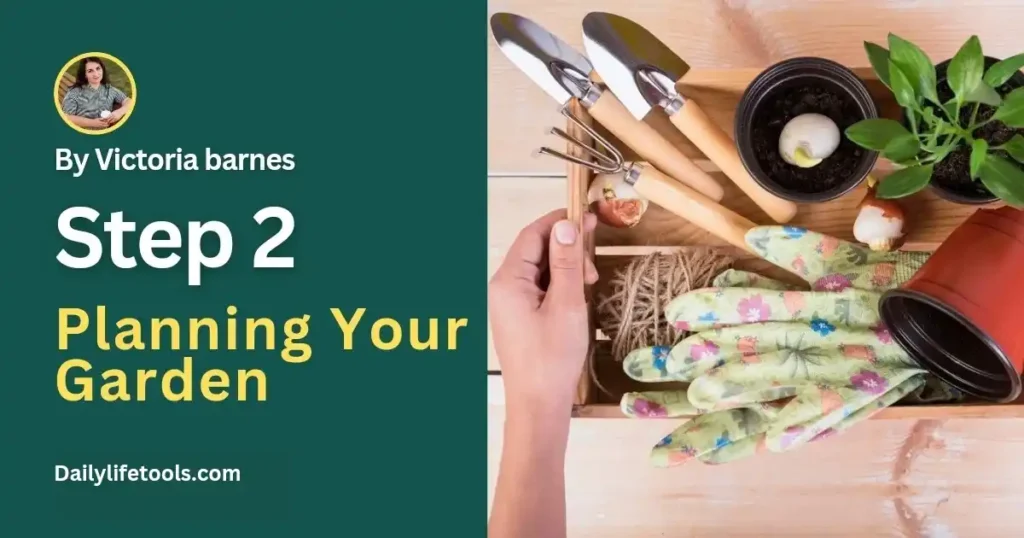
Before starting a new garden, you must decide what garden you want.
Consider an organic vegetable and herb garden, a pure wildflower garden, or a fruit garden.
Suppose you would like to have an organic vegetable garden.
In that case, you can produce many vegetables quickly and in less time, such as tomatoes, lettuce, beans, carrots, garlic, and potatoes.
This will allow you to eat fresh vegetables from your garden. You can produce some herbs like rosemary, oregano, thyme, or chives.
You can grow blueberries, raspberries, strawberries, and cherries if you want a fruit garden.
Read Also: A Beginner’s Guide to Planning Your Garden (Just 9 Steps)
Read Also: 21 Best Gardening Layouts and Ideas for Every Size Garden
Step 3: Where to Put Your Garden
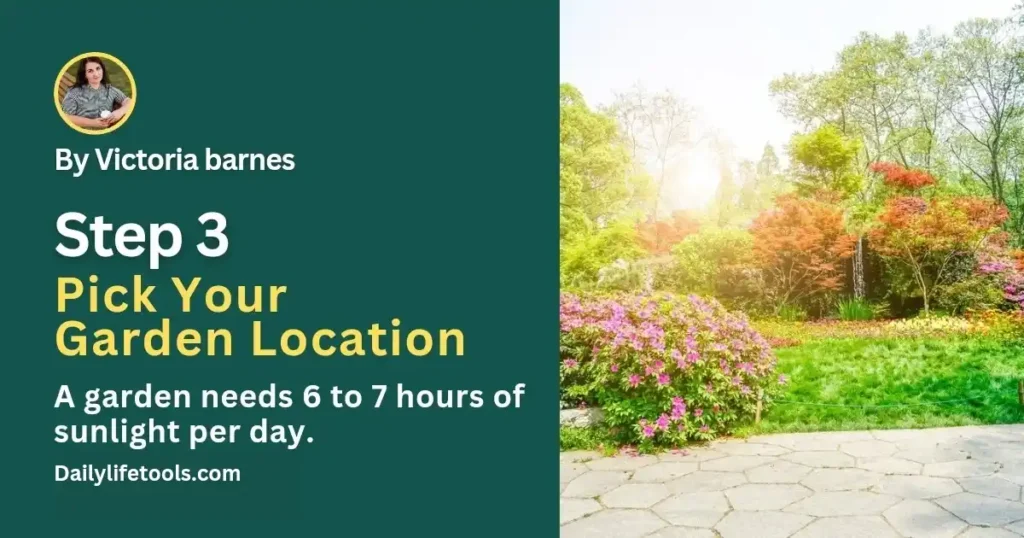
A good place must be selected for making a garden. You can garden in the front yard or backyard of the house, or even on the balcony.
While choosing the place, care should be taken that the sunlight reaches the garden properly.
A garden needs 6 to 7 hours of sunlight per day.
Drainage should be done in the garden. The garden area should be kept level so water does not accumulate there.
Another thing you have to keep in mind is the soil quality of the place you select.
Your soil quality could improve if your preferred area gets 7-8 hours of sunlight daily.
But then you will not be able to cultivate vegetables, herbs, or flowers well; the crops will not be healthy.
So what should be done? To start a new garden, follow the guide given by the experienced gardener, like this article.
Read Also: Where to Put Your Garden: A 5-Step Guide.
Step 4: Rectify Your Soil
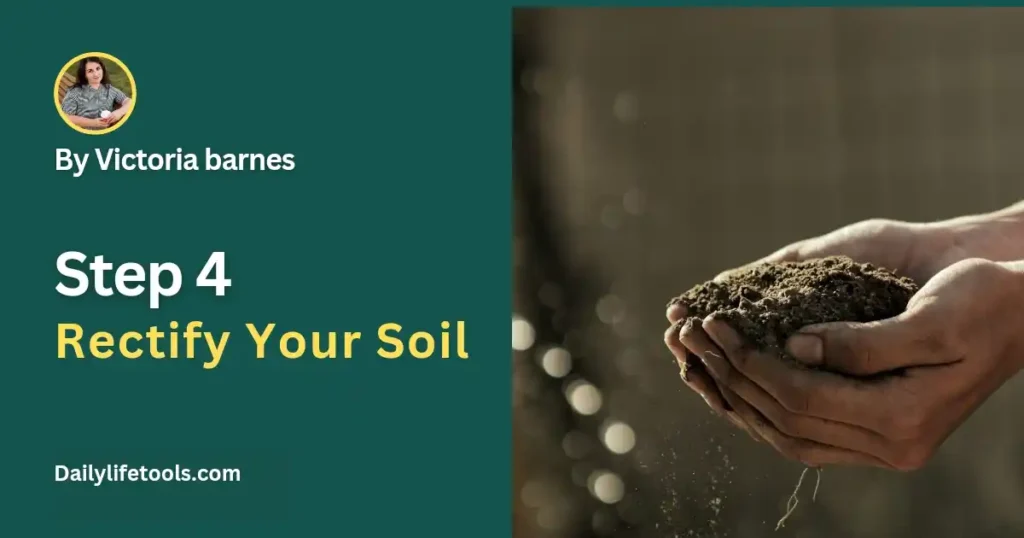
Soil is the most essential component of the garden. It is only possible to plant crops by knowing whether your soil is suitable for gardening.
Good soil must be selected for growing good crops.
But when starting a new garden, you don’t need a soil test or anything like that.
You can prepare your garden soil yourself by mixing compost, coconut coir, and vermiculite with the soil.
I like filling my containers, raised beds, or planter bags with compost and coconut core mixed soil.
This is a perfect mix for your containers and garden-raised beds.
Coconut core lightens the soil and helps retain water.
Vermiculite allows the soil to breathe. It gives the roots plenty of moisture and nutrients.
Related Article: A Guide On How to Test Soil for Gardening (3 DIY Soil Tests)
Tips: Apply soil amendments following soil test recommendations.
Step 5: Sunlight
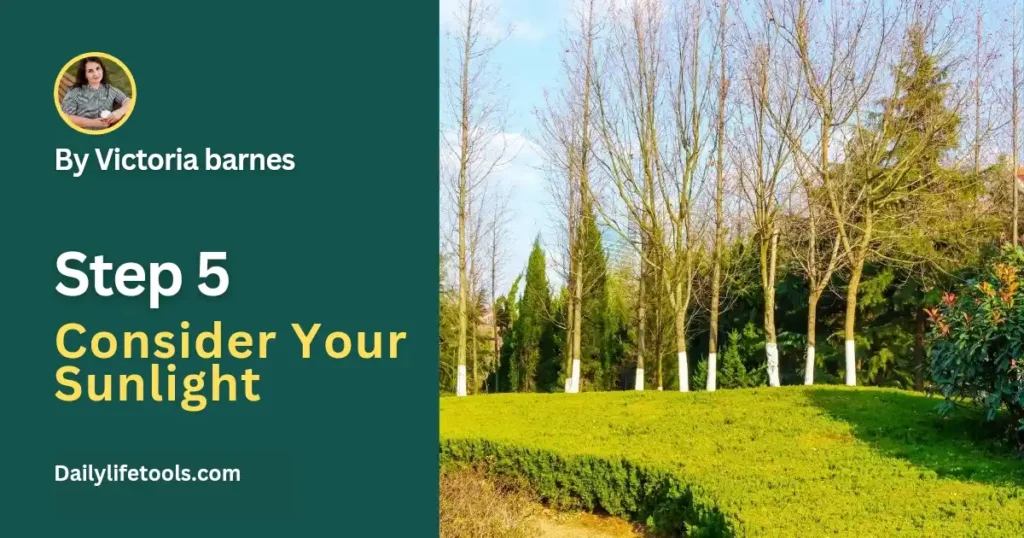
The sun plays a crucial role in gardening.
Whether you garden at the back or front of the house or on the balcony, you must ensure sunlight reaches your garden.
There must be sunlight to grow good crops. Some plants need at least 6 to 8 hours of sunlight daily, while others need 3 to 6 hours.
Some plants require full sun, grow best in direct sunlight, and grow best in low light. It depends on what types of crops are planted.
Tips: Plants that grow in full sun need at least six to eight hours of direct sunlight daily.
Related Article: How Much Sun Does a Vegetable Garden Need?
Step 6: Essential Tools You Need
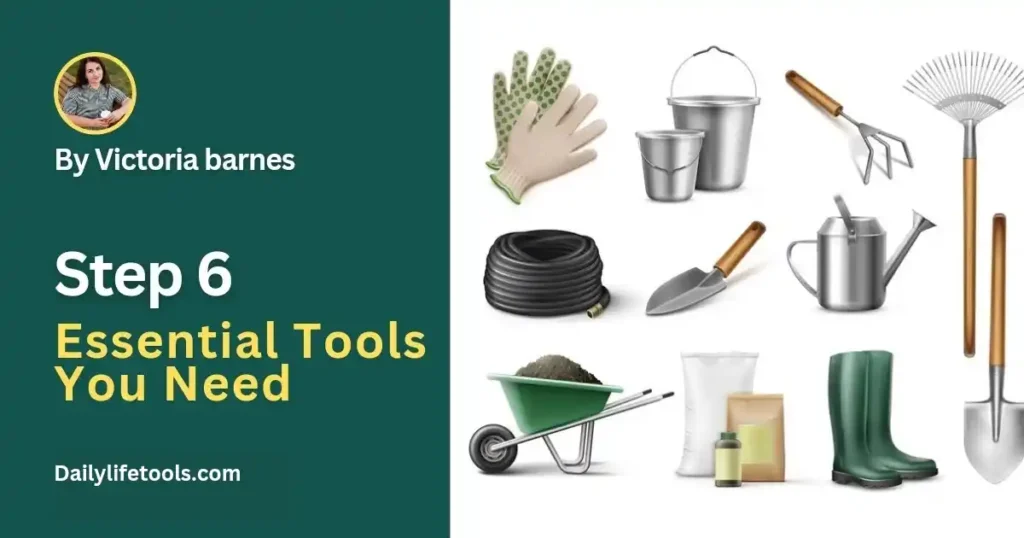
You will need some essential tools to start a new garden.
Focus on the essentials for now.
A good pair of gardening gloves will protect your hands, while a hand trowel is perfect for digging small holes and planting seeds.
You’ll also need a rake to smooth soil and remove debris, and a watering can to keep your plants hydrated.
A shovel or spade will help turn soil and break up tough ground.
Consider adding a hoe for weeding and a pruner for trimming later on.
With these essential tools, you’ll be well on your way to a thriving garden.
What tools do I need to start a garden?
- Bamboo Plant Stake
- Rake
- Hand Trowel
- Gardening Gloves
- Watering Can
- Wheelbarrow
- Garden Fork
- Spade
- Hose
- Pruning Shears
- Shovel
- Garden Hoe
- Gloves
- Hoe
- Loppers
- Pruners
- Digging Fork
- Shears
- Garden Knife
- Knee Pads
- Leaf Rake
- Bypass Loppers
- Cultivator
- Dibber
Tips: These tools are useful for starting a new garden.
Related Article: Essential Tools you’ll Need to Get your Garden Started
Step 7: Prepare Garden Bed or Pot
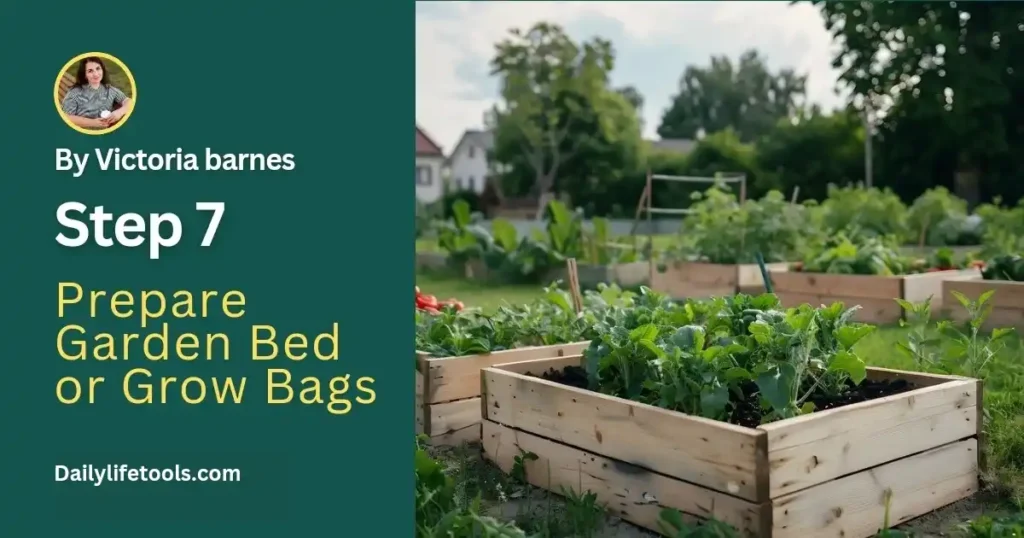
If you are new to gardening, you should start with a tiny space; you can quickly grow good crops in a container, raised bed, or grow bags.
You’ll be able to start with the best soil using these methods, fill your container with the best soil, grow bugs, and then you’ll be ready to start gardening.
Raised beds are a great way to start a new garden.
For the first raised bed, a 4/4 bed or a 4/8 bed is best for starting a garden.
The depth of your rice bed should be between 12 and 18 inches.
That provides enough soil to support the root growth of most plants.
You can grow many vegetables, herbs, flowers, and fruits in a small space.
Read Also: How to Prepare Raised Garden Bed in 6 Steps: With Pictures
Step 8: Select Some Seeds
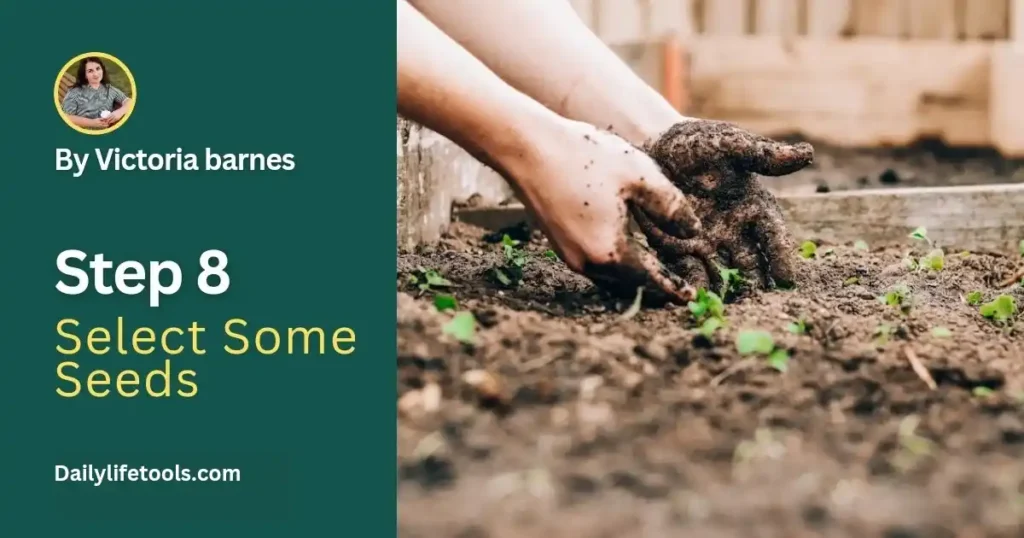
When it comes to the step of choosing seeds, I suggest planting seedlings instead of buying seeds for a new garden.
I first started gardening with seedlings.
Producing seedlings from seed is tricky for beginners. Choosing seeds or seedlings depends on what kind of garden you are planting.
Are you doing vegetable gardening?
If you have a vegetable garden, you must select seeds or seedlings according to the season, considering which vegetables will be produced in which season.
Depending on your garden type and features, you can order better-quality seeds from Amazon.
Seedlings or trees you can collect from the nearest nursery in your local area.
I always collect my garden seeds from Amazon.
Related Article: How to Choose Your Garden Seeds in 8 Simple Steps
Step 9: Plant your seeds
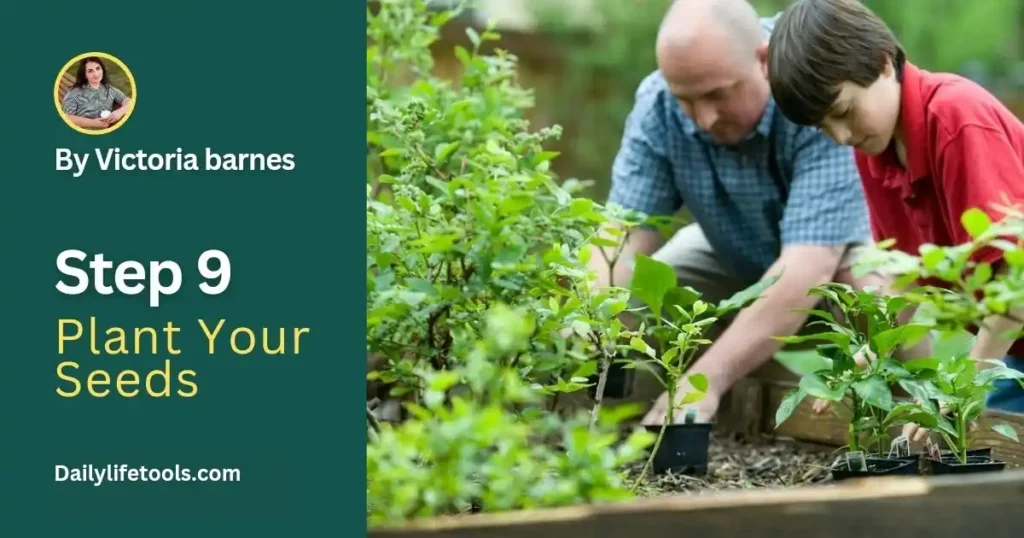
After selecting the seeds for the garden, the job is to plant them. The seeds should be planted according to the season.
The seeds should be sown, considering which crop grows well in which season.
Plant seeds using your garden’s raised beds, containers, or grow bags.
How do you plant your seeds or seedlings?
Your seed packet contains complete rules and instructions for seeding.
Follow the rules carefully and plant the seeds according to the instructions.
Plant the seeds very carefully.
Leave some space between one seed and another. After planting the seeds, cover the with light soil over the seeds.
You can choose seedlings or trees from the nursery and transplant them.
Then, plant the tree according to the rules on the tag attached to your tree.
Step 10: Water Your Garden at the Right Time
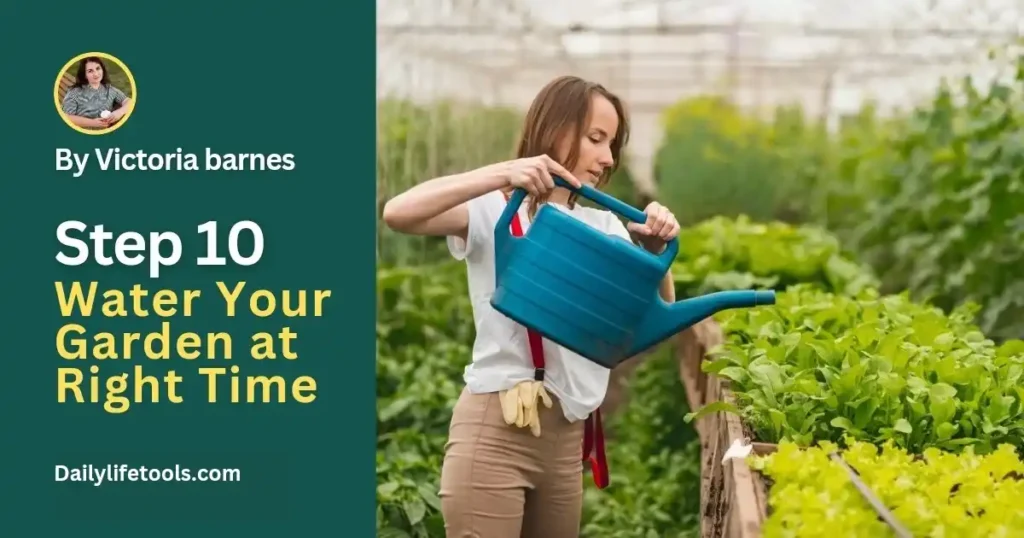
The best time to water plants is in the morning or evening.
The seeds should be watered as soon as they are sown or transplanted.
Seedlings can only be kept with water. They should be watered regularly, two times a day, until they grow.
Morning and afternoon are good times to water the garden plants.
Water should be given until the roots of the plants are saturated. After that, water should be offered occasionally.
Usually, during the growing season, plants require about 2.54 cm of water in 7 days.
If it is not raining, the garden should be watered enough, and the soil moisture should be cared for.
This method measures whether the amount of water in the tree is decreasing.
Place your finger 7 cm deep into the soil. If the soil seems dry, the plant probably needs water.
However, excessive water should not be given, as the plant may die due to rotting.
Our goal is to keep the soil moist with water, not soaking.
Step 11: Mulch Your Garden
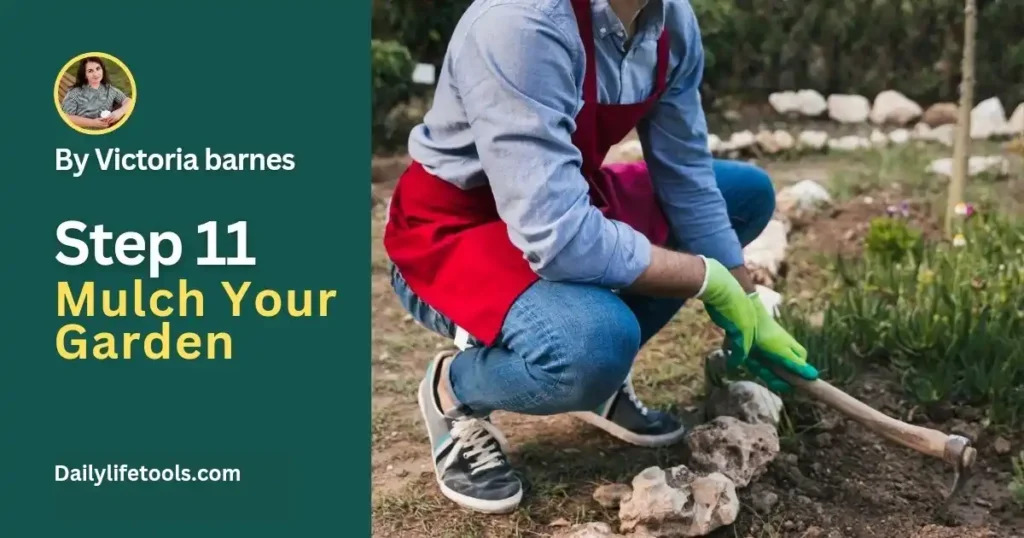
Mixing the correct type of fertilizer with each crop is very beneficial and essential.
It covers the soil with bark, straw, wood chips, and other organic materials.
Use mulch around plants in your garden. Covering the soil with organic matter and stones makes it difficult for weeds to germinate.
A variety of beneficial soil organisms prefer the soil. It becomes fuel for the soil food web, much like compost.
Step 12: Take Care of Your Garden Regularly
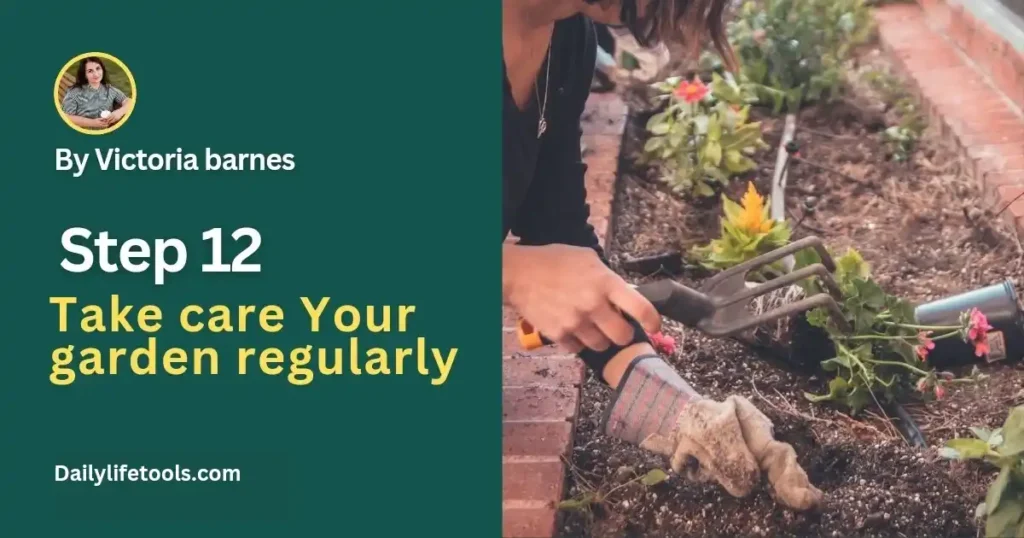
in this last step of our guide on how to start a garden for beginners. The last step is to take care of your garden regularly.
A garden needs to be maintained periodically to maintain its beauty.
Maintain the garden regularly as your garden crops begin to grow.
Water the plant regularly. Weed the leaves behind the garden. Remove diseased plants from your garden.
Excess weeds can infect garden seeds and plants. Use insecticides to protect against pest insects.
Tie tall trees with sticks and let them grow. Harvest the crops from the garden when they are ready to eat.
Alfred Austin
There is no gardening without humility. Nature constantly sends even its oldest scholars to the bottom of the class for some egregious blunder.
TIPS: Gardening for Beginners
- Peas don’t like too much water.
- Potatoes do not like tomatoes.
- Potatoes don’t like cucumbers.
- Potatoes and cabbage are friends.
- Do not plant beans with onions or beets.
- Beans love carrots.
- Beets love onion, cabbage, and potatoes.
- Tomatoes, carrots, and peas.
- Cabbage does not like radishes.
- Beans and cucumbers do not like each other.
- Carrots and onions do well together.
Beginner Gardener? Avoid These Common Mistakes
- Making a mistake and giving up
- Forgetting to nurture wildlife
- Neglecting the soil and forgetting to mulch
- Forgetting to observe & experiment
- Freaking out and trying to ‘fix’ things
- Doing too much too fast
- Planting out of season (or for the wrong climate)
- Watering too much or too little (usually too little)
- Ignoring useful design tactics
- Leaving garden beds empty
Learn More About a Beginner Gardener? Avoid These Common Mistakes.
How do I become a better gardener?
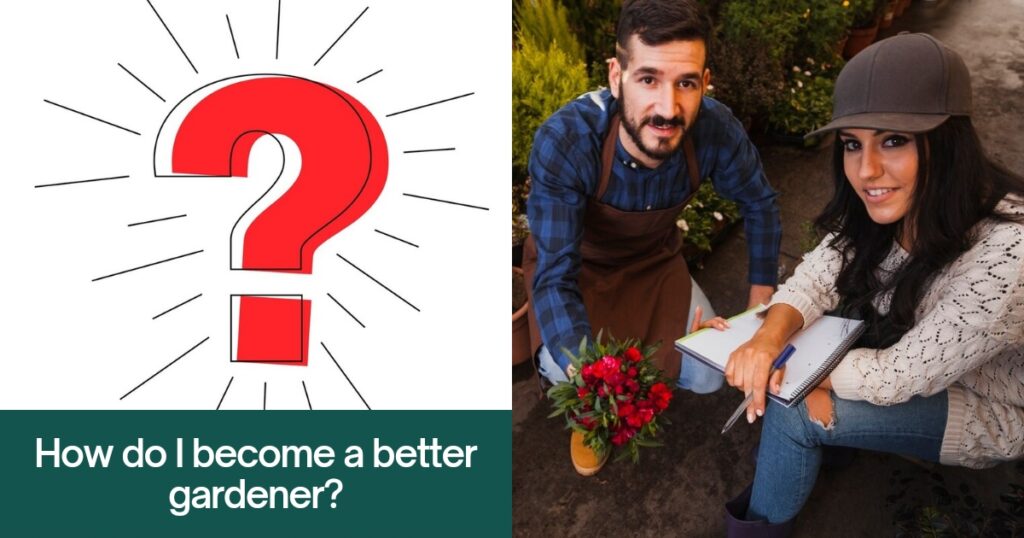
10 ways to become a great gardener:
- Take classes.
- Read good gardening books.
- Improve your soil.
- Pay attention.
- Go on garden tours.
- Learn to plant seeds.
- Learn how to divide perennials.
- Learn to prune trees and shrubs.
- Take chances.
- Give away plants and vegetables.
Learn More About: How do I become a better gardener?
Conclusion: How to Start a Garden for Beginners
Are you dreaming of fresh, homegrown vegetables and herbs? You can make it a reality.
This guide has broken down how to start a Garden for Beginners into 12 Simple Steps, perfect for beginners like you.
We’ve covered everything from choosing the right location and preparing your soil to selecting seeds and caring for your plants.
By following these steps, you’ll be well on your way to cultivating a thriving garden that brings you joy and delicious rewards.
So, what are you waiting for? Grab your gloves, get your hands dirty, and get ready to experience the satisfaction of growing your organic food.
Discover how to start a Garden for Beginners and the best gardening tools and essentials thoughtfully selected by Daily Life Tools for your gardening success.
How to Start a Garden for Beginners: Some Important Links
Want to know how much sunlight different vegetables need? Check out these helpful charts: 70 Vegetable Sunlight Charts.
Are you still trying to figure out flowers? This guide has you covered: 50 Flowers Sunlight Chart.
Need a comprehensive list of plants to consider for your garden? This A to Z list is a great resource: List of Garden Plants (A to Z).
Planning your garden layout is essential! Here are 21 inspirational ideas: 21 Best Gardening Layouts.
Are you interested in organic gardening practices? This link provides information specific to the United States: Organic farming in the United States.
Want to learn more about forestry in the United States? Look no further: Forestry in the United States.
Need help figuring out where to get gardening advice? Cooperative Extension Services are a fantastic resource: Cooperative Extension Services: Your Local Gardening Experts.
Are you looking for documentaries about US agriculture? This link has you covered: Documentary films about agriculture in the United States.
Want to learn more about agricultural education opportunities? Check out these universities and colleges: Agricultural universities and colleges in the United States.
With all these resources, you have everything you need to become a successful gardener.
How to Start a Garden for Beginners: Other essential links:
- 101+ Important Gardening Posts for Beginners
- Herbs to Treat Anxiety
- Herbs for Healing
- Herbs for Dry Skin
- Herbs for Concentration
- Herbal Tea Properties
- Making your First-aid Kit
- 6 Most Important Nutrients
- Vitamin and Mineral Cheat Sheet
- Growing Vegetables Chart
- 35 Medicinal Plants
- Microgreens
- High Protein Foods List
- Healthy High Fiber Foods List
FAQs
What are the six types of soil?
Soil Types (6): Sandy, Loamy, Clayey, Silty, Peaty, and Chalky (Each has pros and cons for plants).
What is a garden plot?
A designated area in your yard for growing plants. It can be raised beds, containers, or an in-ground section.
What is the best soil for a garden?
Loamy soil is the gold standard – a mix of sand, silt, and clay that provides drainage and nutrients.
How many feet between plants?
A good rule for beginners is to space plants so that mature plants’ leaves barely touch (2-4 cm apart). This translates to 5-10cm between seedlings for small leafy veggies like lettuce.
What is the most accessible garden to start?
1. Strawberries: Great for pots, low maintenance.
2. Tomatoes (determinate): Beginner classic; choose a compact variety for limited space.
3. Cucumbers: Fast-growing, easy care, vertical or sprawling growth possible.
4. Zucchini & Squash: Prolific producers, easy to grow, need space to vine.
How do you make a simple, beautiful garden?
Choose a flower color theme, use decorative planters, and add edging stones for a polished look.
How do I tend my garden?
Evening watering for happy plants! ☀️ Water your garden in the evening during hot weather. This gives plants time to absorb the water before the hot sun evaporates.
What is the fastest vegetable to grow?
Radishes are an excellent choice for beginner or old gardeners. They are one of the fastest-growing vegetables, taking just 3 to 4 weeks to reach harvest time. They are also easy to grow.
What are the best three plants to grow together?
1. Onions // Beets, Carrots, Swiss Chard, Lettuce // Beans, Peas
2. Peas // Beans (other varieties), Corn, Radish, Turnip // Garlic, Onions
3. Potatoes // Beans, Corn, Peas // Tomatoes
Which vegetable is suitable for farming?
Vegetables: Tomatoes, potatoes, onions, peppers (depending on your climate).
Which plant grows fastest at home?
Our Top Picks for Quick Growth:
1. Radish (3-4 weeks)
2. Baby Carrots (5-6 weeks)
3. Cucumbers
4. Baby Beetroot
5. Turnips
6. Beans
7. Spinach or Silverbeet
8. Arugula or Rocket
Which fruit takes the most time to grow?
The durian is a patient person’s fruit! Unlike many fruits, durian trees take a long time to mature, waiting 5-7 years (or even longer for some varieties) to bear fruit.
How to arrange the plants in a garden?
Layer your garden bed by height: tall in the back, medium in the middle, and short and colorful in front for the best visual impact.

